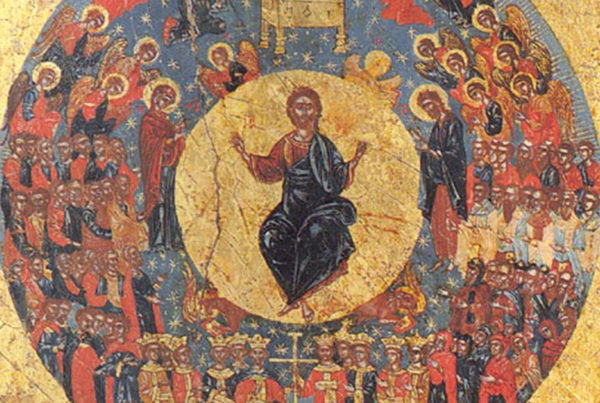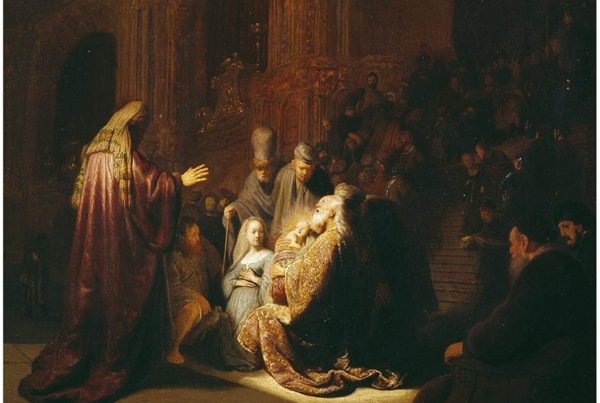[Note: this is the fourth in a series of posts working through Greg Boyd’s recently released Crucifixion of the Warrior God: Interpreting the Old Testament’s Violent Portraits of God in Light of the Cross. Go here for the first one and work your way through!]
Let’s recap where we’ve been thus far:
- God’s “breathing” of the Old Testament witness is a dialectical rather than unilateral process. That is to say, God does not simply act in the creation of Scripture; he lets himself be acted upon. And that means that…
- There are times when the true revelatory content of the Old Testament text will be found not on its surface but in its depth, where we, with the eyes of faith given to us by our apprehension of God in the Crucified Christ, understand that in texts which depict God as, for lack of a better term, “sub-Christlike”, we must assume that “something else is going on.”
Those fundamental convictions, which form the foundation for “The Cruciform Hermeneutic”, Boyd argues will lead us to the first of four hermeneutical principles: The Principle of Cruciform Accommodation. “While the Cruciform Hermeneutic tells us that we must assume that ‘something else is going on’ when we encounter [such] material…the Principle of Cruciform Accommodation discloses the most fundamental aspect of what this ‘something else’ is.” He argues that what we are witnessing is in fact “the remarkable depths to which God has always been willing to stoop to remain in covenant relationship with, and to continue to further his historic purposes through, his people, just as he does in a supreme way in the cross” (p.644). (You can read a summary of this principle here.)
That takes us to the second of his four principles: The Principle of Redemptive Withdrawal. Boyd states the principle as follows:
God judges sin, defeats evil, and works for the redemption of creation by withdrawing his protective presence, thereby allowing evil to run its self-destructive course and ultimately self-destruct (p. 768).
How do we know this? According to Boyd, we know this because this is what took place in cross of Jesus:
The Principle of Redemptive Withdrawal is anchored in the fact that God the Father did not act violently toward his Son when the Son bore the judgment of our sin that we deserved. Rather, with a grieving heart, the Father simply withdrew his protective hand, thereby delivering his Son over to wicked humans and fallen powers that were already “bent on destruction” (Is 51:13). Yet, by abandoning his Son to suffer the destructive consequences of sin that we deserved, the Father wisely turned the violent aggression of these evildoers back on themselves, causing evil to self-implode and thereby liberating creation (ibid).
If this is a true account of the cross and therefore a true account of the character of God in dealing with sin, then texts in the Old Testament attributing wrath directly to the activity of God are, in point of fact, indirectly revealing a God who “expresses wrath” simply by letting sin run its self-destructive course.
That is to say, just like how, in the cross of Christ, God the Father did not DO anything to his Son, so also, in the episodes of “wrath” which appear in the Old Testament text, God the Father is not DOING anything to those who suffer the wrath–he is merely withdrawing his protective presence. (This thereby also confirms the Principle of Cruciform Accommodation.)
Now this may seem like a good-hearted but far-fetched account of the notion of “wrath” in the Old Testament, but the truth, Boyd argues, is that “[the Old Testament authors’] own writings and/or the broader canonical witness make it abundantly clear that God did not, in fact, carry out the violence they attribute to him” (p. 1256). God does not need to personally resort to violence of any kind to carry out his wrath. “Because the death consequences of sin are organically related to the sin itself, God only needs to stop protecting people from these consequences for them to experience divine judgment” (p. 828).
The exile, for example, took place when Yahweh “gave [Israel] into the hands of plunderers” (1 Kgs 17:20). Wayward people reap destructive consequences as the natural “fruit of their schemes” (Jer 6:19). The trouble that evil people cause “recoils on them; their violence comes down on their own heads” (Ps 7:16). And so on.
The relationship between sin and consequence, Boyd wants us to understand, is organic from the start and “is reflected in the Bible’s first account of sin. God instructs the first human (ha adam) that if he ate from the forbidden tree, he would ‘certainly die’ (Gen 2:17).” Significantly enough, Boyd writes, “God did not say, ‘I will kill you.’…Adam and Eve simply reaped the death that their disobedience had sown” (p. 835).
This principle is at work even in the Old Testament account of the Exodus. The plagues on Egypt, according to Boyd, were not, despite their surface appearance, God personally inflicting violence upon Egypt, but rather withdrawing his protective hand. This is the “something else” that is going on in the narrative, and it is confirmed by clues both in the narrative itself and in the broader canonical witness. In Exodus 12:23 the text says that Yahweh “will not permit the destroyer to enter your houses and strike you down.” It does not say that he will personally strike the people down, which is a clue that there is more going on than what we might be led to believe on a surface reading of the text. Likewise, the Psalmist in Psalm 78 indicates that the plagues were personally caused by a “band of destroying angels” which Yahweh “unleashed in his hot anger” (v. 49). While indeed the Psalmist earlier in the text indicated that it was Yahweh himself who personally afflicted the Egyptians, this clue, along with what we know of God revealed in Christ, should lead us to perceive a deeper dynamic at work (and in the process confirm the first of the four principles).
One of the most compelling (in my opinion) pieces of Boyd’s argument for the Principle of Redemptive Withdrawal is his treatment of the Conquest Narratives of Joshua. Though the text of Joshua is often marshaled as evidence that the God and religion of the Bible are at their core deeply depraved, Boyd, through both the lens of the cross and the evidence of the text of Joshua, sees something else at work. “Viewed through the lens of the cross, these genocidal portraits of God rather reflect the fallen heart and mind of Moses and of God’s people at this point in their history” (p. 963). God’s original plan, Boyd argues, was for a “nonviolent conquest” of the land using “the hornet” (p. 966; cf. Ex 23:28) and by causing the land to become uninhabitable, “vomiting out its inhabitants” (p. 968; cf. Lev 18:24-25). They would thus enter the Promised Land the same way they exited Egypt: nonviolently (p. 969). It was Israel’s lack of trust in this plan that made (in their eyes) the wiping out of entire indigenous populations necessary. “They rather placed their confidence in the sword while viewing Yahweh along the lines of a rather typical–albeit, much stronger–ANE warrior deity who promised them victory if they fought in his name” (p. 971).
An important final word: even though “removing his protective hand” grieves the heart of God, he only does it as a last resort, and always with a redemptive purpose. “God is therefore always reluctant to turn people over to their sin. Yet, when God sees that his merciful protection of people from the destructive consequences of their choices is only serving to further harden these people in their sin, God has no choice to withdraw this protection and allow their sin to ricochet back on them as a divine judgment” (p. 1255). Like the father in the parable of the prodigal son, God’s hope is always that sinners who taste the fruit of their ways will come to their senses and return to him.




